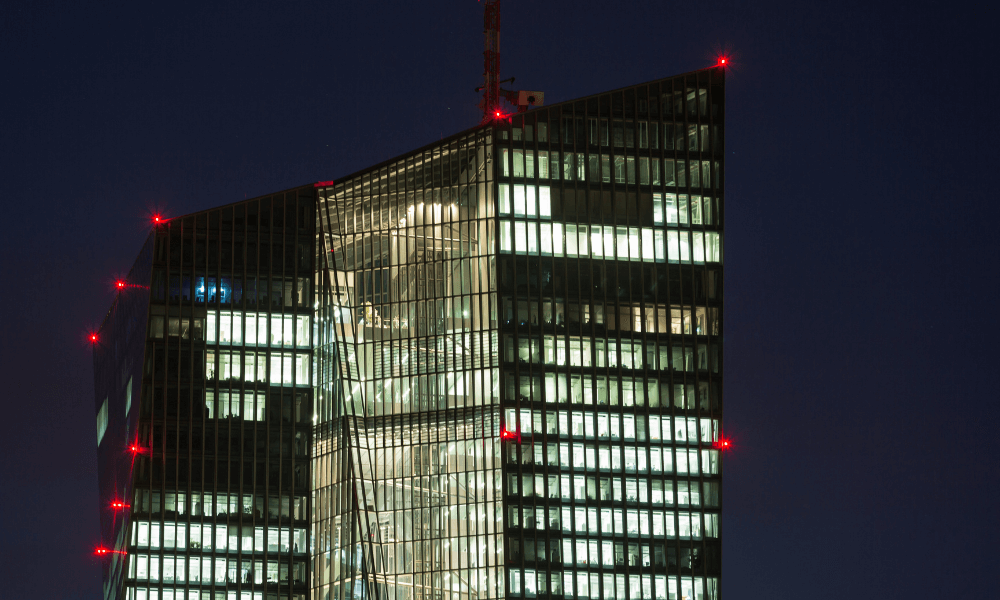
KEY POINTS
Just as many central banks had set their sights on normalizing monetary policy as economies emerged from the coronavirus pandemic, Russia’s invasion of Ukraine threw them another curveball.
The U.S. Federal Reserve last week approved its first interest rate hike in more than three years and penciled in further increases at each of its six remaining policy meetings this year, as it looks to rein in soaring inflation.
The Bank of England imposed its third consecutive rate hike but struck a relatively dovish tone, with the Russia-Ukraine conflict and its upward pressure on energy prices expected to keep inflation higher for longer.
European Central Bank President Christine Lagarde said last week that policymakers have “extra space” between the planned end of the ECB’s quantitative easing program this summer and a first hike to the cost of borrowing in more than a decade.
The ECB earlier this month surprised markets by announcing it would end its asset purchase program in the third quarter of 2022.
So, while the Bank of England offered a slightly dovish surprise after its more hawkish start out of the blocks, the Fed and the ECB both surprised on the hawkish side, evidencing the balancing act facing policymakers.
Central banks the world over have been caught cold by a surge in inflation in the aftermath of the pandemic, which has sent annual consumer price increases to multi-decade – and in some cases, record – highs.
The risk, economists have suggested, is that by tightening policy aggressively even as growth is threatened by the conflict and financial conditions and the labor market tightening, central banks could inadvertently trigger “stagflation” — a period of high inflation, low growth, and high unemployment.
However, most seem to have prioritized reining in inflation over concerns about economic growth and have remained undeterred so far by the potential impacts of the war.
Hugh Gimber, the global market strategist at JPMorgan Asset Management, said Thursday that the latest round of central bank meetings showed policymakers are feeling “uncomfortably behind the curve” and are eager to normalize policy.
Yet while policymakers have been talking tough, in reality, monetary policy still remains very supportive of growth despite the latest rate increases. They may be talking the talk on tightening, but they've yet to really walk the walk,” Gimber said.
This time last year, Gimber noted, patience was a central theme in policymakers’ messaging, meaning any policy error was likely to be the result of their moving too slowly rather than too quickly.
“Yet a year on, inflation is now running at multi-decade highs and labor markets have staged a remarkable recovery. ‘Patience’ has been abandoned – ‘optionality’ is the new buzzword,” he said.
“Further policy tightening lies ahead, and the central banks want the option to move more quickly if inflationary pressures don’t show signs of easing.”
Mario Centeno, Portuguese central bank governor and member of the ECB Governing Council, told CNBC last week that the conditions for a rate lift-off had not yet been met, with the normalization process remaining “neutral” and “data-dependent.”
Centeno said the euro area outlook depends on the duration of the conflict and the effects of Western sanctions against Russia.
Read More
Colorado's Governor Wants To Be A Haven For Crypto As A 'Basic Convenience Thing'
Japanese Start-Up Wants To Cause Real-Life Pain In The Metaverse
Bored Ape’s New ApeCoin Puts NFTs’ Power Problem On Display
“Unemployment is probably the best indicator for the European economy these days. We have a very strong labor market coming out of the recession — it was usually supported by fiscal policy measures.
That’s why I think that’s why coordination is a very important issue in Europe,” Centeno said, suggesting that governments and central banks need to remain in lockstep.
“Even if it’s not probably the most likely scenario today, a scenario with low growth and high inflation is not out of the possibilities in the near future, and we must be very careful,” he added.
In the tug of war between supporting growth and containing inflation, policymakers appear to be favoring the latter.
Brunello Rosa, CEO & head of research at Rosa & Roubini, agreed with this approach and the “division of labor” required between monetary and fiscal policy, telling CNBC that inflation is a more immediate threat.
“If you shave off some tenths of a percentage point or even a full percentage point of growth, due to the sanctions and potential effects of the war, you will still have a growth rate that is optically acceptable, I would say,” he told CNBC last week.
“Instead what is not optically acceptable is inflation reaching 8% in the U.S., 6% in Europe, 7% in the U.K., and what’s the danger of that?
That higher inflation gets entrenched and then you enter into that wage-price spiral that nobody wants to. Are we closer to that? Yes, we are.”
Neil Shearing, the chief economist at Capital Economics, echoed this view in a research note on Monday but said the more aggressive hikes in interest rates now being projected by Fed officials have raised concerns that the economy could be tipped into recession.
 Revealed In 2022 Revealed In 2022 Best Day Trading Strategies for Beginners |
“This, in turn, raises the more general question as to whether, given the headwinds posed by the war in Ukraine and the spread of the Omicron variant in China, recoveries in major advanced economies are strong enough to withstand monetary tightening,” Shearing said.
He added that the lessons from history – notably the eight tightening cycles since the late 1970s in the U.S., five in the U.K., and three in the euro area – are “troubling.”
“This makes 16 tightening cycles in total – 13 of which have ended in recession. Soft landings are hard to achieve,” he added.
-CNBC